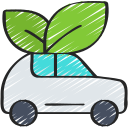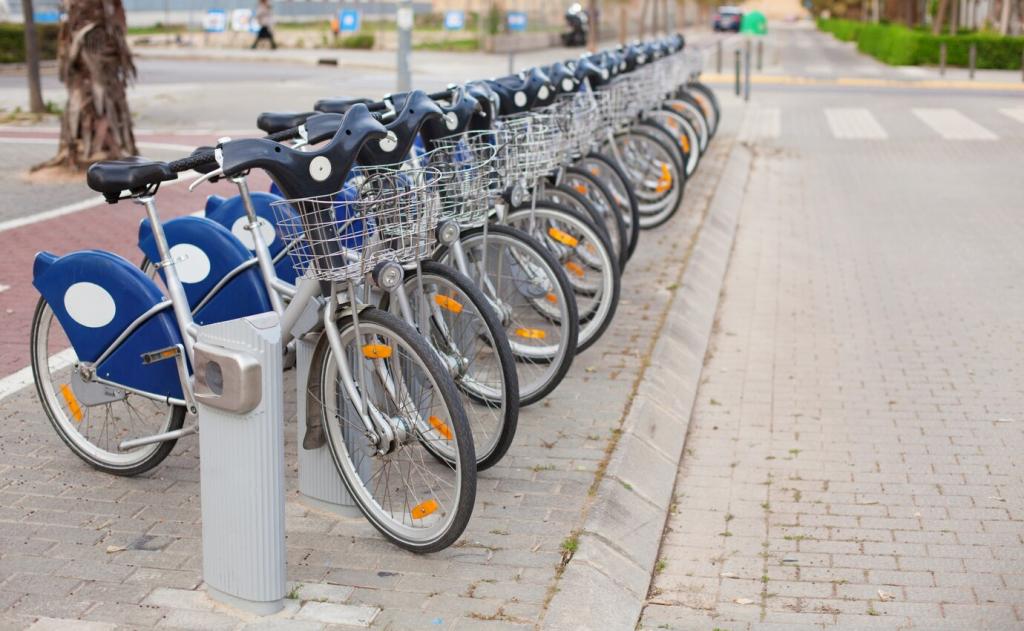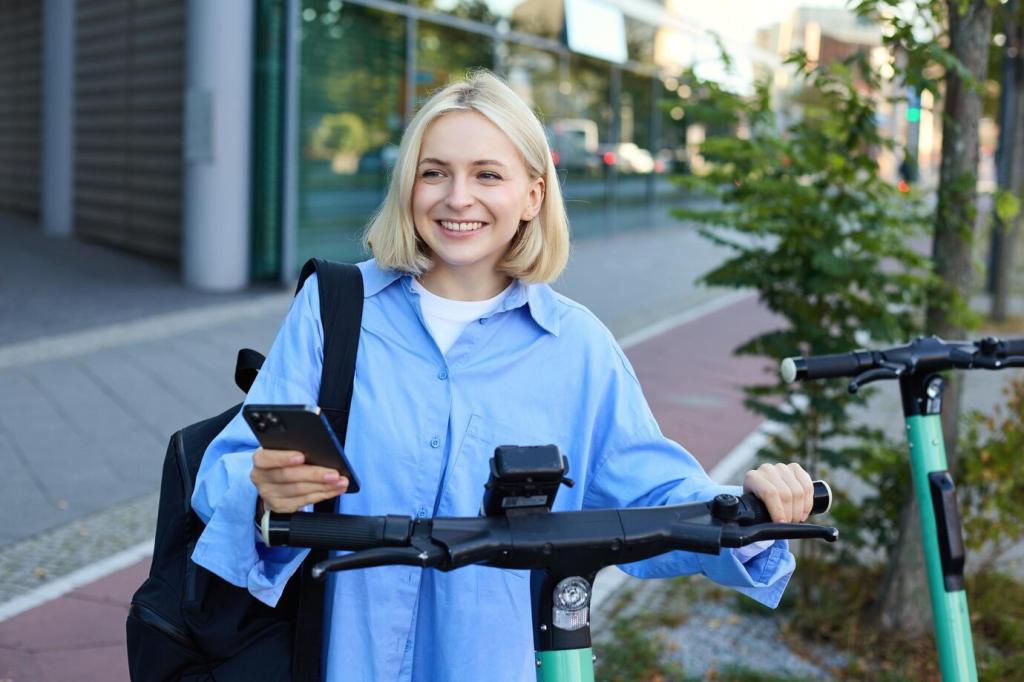Designing Safer Streets for Light Electric Travel
Physical separation from fast car traffic invites more cautious speeds and confident riding. Clear sightlines, smooth surfaces, and predictable intersections benefit scooter riders, cyclists, and drivers alike, reducing conflicts and helping everyone move steadily without the constant anxiety of close passing or swerving.
Designing Safer Streets for Light Electric Travel
Painted corrals, geofenced zones, and in‑app guidance keep sidewalks welcoming for people walking, rolling, and pushing strollers. Simple design cues—like end‑cap bumps and signage—turn parking from an afterthought into a respectful ritual that sustains public goodwill and preserves accessibility for everyone using the street.







